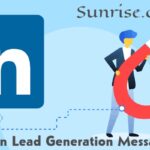How To Use Linkedin Groups For Lead Generation -In the realm of professional networking, LinkedIn has established itself as the go-to platform for connecting with industry peers, potential employers, and clients. Among its many features, LinkedIn Groups provides a unique opportunity for professionals to engage in meaningful discussions, share valuable insights, and expand their network. However, LinkedIn Groups can also be a powerful tool for lead generation. By leveraging the platform’s robust features and engaging with the right audience, professionals can tap into a vast pool of potential leads. In this article, we will explore how to effectively use LinkedIn Groups to generate leads, drive business growth, and establish oneself as a thought leader in the industry.
CHECK OUT: Outsourced Lead Generation | GROW YOUR BUSINESS
How To Use Linkedin Groups For Lead Generation
Here is how to effectively use LinkedIn Groups to generate leads, drive business growth, and establish oneself as a thought leader in the industry;
Join Relevant Groups
The first step in utilizing LinkedIn Groups for lead generation is to identify and join relevant groups within your industry. Furthermore, LinkedIn Groups are virtual communities where professionals gather to discuss industry trends, challenges, and opportunities, providing access to potential leads who are actively engaged and interested in your industry.
When selecting groups to join, consider the following factors:
- Relevance: Choose groups that are directly related to your industry, niche, or target audience. This ensures that you are engaging with professionals who are more likely to be interested in your products or services.
- Activity: Look for groups with a substantial number of active members who regularly participate in discussions. Active groups provide a fertile ground for lead generation and networking opportunities.
- Quality of Discussions: Evaluate the quality of discussions happening within the group. Are members actively sharing valuable insights, asking thoughtful questions, and seeking solutions? Engaging with high-quality discussions increases your chances of attracting leads.
Engage in Meaningful Discussions
Once you have joined relevant groups, it’s crucial to actively engage in meaningful discussions. Furthermore, This involves sharing insights, asking thoughtful questions, and providing value to group members. Lastly, By establishing yourself as a knowledgeable and helpful professional, you increase your credibility and attract potential leads.
Here are some strategies to effectively engage in LinkedIn Groups:
- Share Valuable Content: Post relevant articles, blog posts, or industry news that can spark discussions and add value to group members. Be sure to provide a brief summary or thought-provoking comment to encourage engagement.
- Ask Thoughtful Questions: Pose open-ended questions that encourage group members to share their experiences, challenges, and insights. This not only facilitates discussions but also allows you to identify potential leads who are actively participating.
- Provide Solutions and Insights: Offer practical solutions or share your expertise when group members ask for advice or solutions to their problems. Demonstrating your knowledge and willingness to help builds trust and positions you as an authority in your field.
- Network with Group Members: Connect with active and influential group members who align with your target audience. Build relationships by engaging with their content, sending personalized messages, and offering assistance whenever possible.
CHECK OUT: Life Insurance Lead Generation | A SIMPLE GUIDE
Promote Your Content Strategically
In addition to actively participating in discussions, LinkedIn Groups offer an opportunity to promote your own content strategically. Furthermore, Sharing your content in relevant groups can increase its visibility, generate leads, and drive traffic to your website or landing pages.
Consider the following tips for promoting your content effectively:
- Create High-Quality Content: Develop informative, well-crafted content such as blog posts, whitepapers, or case studies that resonate with your target audience. Ensure that your content provides value and addresses their pain points.
- Tailor Content for Each Group: Customize your content to align with the interests and needs of each group you belong to. This demonstrates your understanding of the group’s dynamics and increases the chances of engagement and lead generation.
- Share Content Sparingly: Avoid excessive self-promotion within the group. Instead focus on sharing content that genuinely adds value to the group members. Strike a balance between promoting your own content and actively engaging in discussions. Over-promotion can be seen as spammy and may hinder your lead generation efforts.
- Engage with Group Admins: Building relationships with group administrators can be beneficial in promoting your content. Reach out to them and discuss potential collaboration opportunities, such as guest posting or co-hosting webinars. This can amplify your content’s reach and increase your visibility within the group.
Identify and Qualify Leads
While actively participating in LinkedIn Groups, it’s important to identify and qualify potential leads. Secondly, Focus your efforts on leads who align with your target audience within the group, as not everyone will be a suitable fit for your business.
Here are some tips for identifying and qualifying leads within LinkedIn Groups:
- Analyze Profiles: Review the profiles of group members who actively engage in discussions and share valuable insights. Look for professionals who match your ideal customer profile in terms of industry, job title, location, or company size.
- Evaluate Engagement: Take note of individuals who consistently contribute to discussions, ask relevant questions, or seek advice. Engaging with active participants increases the chances of establishing a meaningful connection.
- Look for Buying Signals: Pay attention to members who express pain points, challenges, or seek recommendations related to your products or services. These “buying signals” indicate a potential lead who may be interested in what you have to offer.
- Connect and Personalize: When reaching out to potential leads, personalize your connection requests or messages. Reference a specific discussion or point of interest to demonstrate that you have taken the time to engage with their content and value their insights.
CHECK OUT: Mortgage Lead Generation Companies | A GUIDE
Nurture Relationships and Convert Leads
Generating leads through LinkedIn Groups is not a one-time transaction. It requires nurturing relationships and gradually converting leads into clients or customers. Additionally, Building trust and credibility is essential in this process.
Consider the following strategies for nurturing relationships and converting leads:
- Stay Consistent: Continue engaging in discussions, sharing valuable content, and providing insights to maintain visibility and demonstrate your expertise. Consistency helps you stay top-of-mind with potential leads.
- Offer Additional Value: Provide additional resources, such as e-books, guides, or exclusive content, to group members who express interest or engage with your content. This demonstrates your commitment to delivering value and helps move leads further along the conversion funnel.
- Leverage Private Messaging: Once you have established a connection with a potential lead, initiate private conversations to delve deeper into their challenges, offer personalized solutions, and discuss potential collaboration opportunities.
- Transition to Other Platforms: While LinkedIn Groups are an excellent starting point for lead generation, consider transitioning leads to other platforms such as email, phone calls, or video meetings. These channels allow for more personalized communication and enable you to nurture leads further. SIGN UP NOW
Conclusion
In conclusion, LinkedIn Groups present a unique opportunity for professionals to not only network and engage with like-minded individuals but also generate leads for their businesses. By strategically joining relevant groups, engaging in discussions, promoting valuable content, and nurturing relationships, professionals can tap into potential leads, drive business growth, and position themselves as thought leaders. Leveraging LinkedIn Groups helps expand networks and establish meaningful connections with potential clients or customers. Start exploring LinkedIn Groups today and unlock the potential for lead generation and professional growth.
CHECK OUT: How Much Should I Be Paying for Homeowners Insurance?







